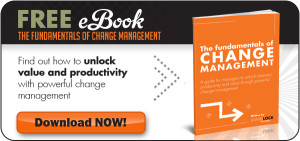Monday, April 20, 2015


There are two basic theories when it comes to selling to a market. The first – that markets are created – is the business practice preferred by Henry Ford and more recently by Steve Jobs. Both leaders were pioneers of innovation, yet both stood by the mantra that markets are made by businesses, and not discovered by customers. It was Ford who said, “If I had asked people what they wanted they would have said faster horses.” Steve Jobs famously said, “A lot of times people don’t know what they want until you show it to them.”
While it is difficult to argue with these two pioneers of industry, people today are more savvy customers than ever before. Businesses are moving rapidly towards giving customers the opportunity to choose what they want and even design their own products. The Internet has given impetus to the second theory of selling to a market: markets are developed in line with customer needs and desires. The Internet has enabled people to customise cars to their own needs, design their own unique shirts, and be increasingly creative.
The future appears as if it will be shaped not by business leaders, but by customers.
Here we look at a British company that found its market changing because of developing customer needs, and how that company instigated organisational change to meet the needs of its customers.
Organisational change driven by customer benefits
In the 1980s, the UK’s Automobile Association (AA) was the country’s number one breakdown and recovery service. It provided the benefits its 3 million customers wanted:
- Ease of contact
- Speed of help
- Trust
- Ability to solve problems
The AA understood that businesses don’t sell goods and services, they sell benefits to customers; and it was this that had propelled the AA to an almost unrivalled position in the UK. Its reputation was so good that it was known as the UK’s fourth emergency service, repairing eight out of ten breakdowns on the spot at the roadside.
The AA got complacent
During the 1970s and much of the 1980s, the AA’s position as the team to trust was so strong that it failed to notice a market gradually changing around it. Its success led it to become complacent about its future and its customers – in much the same way that Kodak had conducted its business – and it changed little. It was comfortable that its customers were comfortable with it.
The AA’s customer-facing service was well established, and its ‘front office’ success was managed by a back office command and control structure that worked to an established procedure and process.
IT drives changing customer needs
The Internet and modern communication methods changed the way customers wanted to interact with their emergency breakdown service provider. Drivers no longer wanted to walk hundreds of yards to the nearest roadside telephone, but instead use their own mobiles. Rising numbers of motorists on UK roads needed to be catered for, too.
At first, the AA failed to recognise these changing market dynamics, and other companies in their space gained ground quickly. Green Flag and the RAC came up on the inside track, promising better service and quicker response times. In 1989, the AA finally saw its market share crumbling, and reacted by attempting to find out what its customers really wanted.
Ask customers what benefits they want when managing change
In a now rapidly evolving market, the AA needed to discover the benefits its customers wanted. Its competitors were closing the gap by developing excellent customer care procedures. The AA conducted a huge research program to understand what customers wanted. The benefits that customers wanted were:
- Dealing with a company with a caring attitude
- Advice about what to do while waiting for the arrival of an AA patrol vehicle
- Car repaired at the roadside, or taken to a garage of choice
- Warranty of any work carried out
- Speed of service
How the AA managed organisational change to meet the needs of its customers
The AA’s strategy was to cut out waste, reduce bureaucracy, and remove layers of unnecessary management. It instigated a program of coaching along with a massive overhaul of its systems, processes, and procedures. It flattened its organisational structure with ‘de-layering,’ removing a large portion of costs (and cutting twelve management levels to just three). It introduced front-line teams, with regular team briefings used to spread good practices, and empowering employees to identify ways to improve customer service. Employee innovation rocketed.
The AA moved from an organisation that was controlled by managers, who decided what customers wanted, to one which was led by customers telling it what they wanted, what was good, and what was bad. The delayering and employee empowerment, combined with a forum for employees to share their on-the-road findings, produced an organisation that once more began delivering superior service and benefits to customers.
The AA also overhauled its IT systems, allowing greater interaction with the customer and patrol vehicles. All the time, the emphasis has been firmly on the customer.
Successful organisational change led by relationship marketing
The AA did what Kodak failed to do: it stopped being complacent and started listening to what its customers really wanted - and it hasn’t stopped doing so. Not only does it enable its employees to share their findings, 1 out of every 34 customers dealt with at the roadside receives a follow-up questionnaire. The findings of these surveys are discussed at senior level, and the results combined with the experience of front-line teams to produce a continuous environment of organisational change in favour of changing customer needs.
The net effect is that AA customers feel like individuals, and valued as ‘members’ of the organisation.
If you want to drive organisational change, try managing change and innovation the AA way: get close to your customer and stay there.

